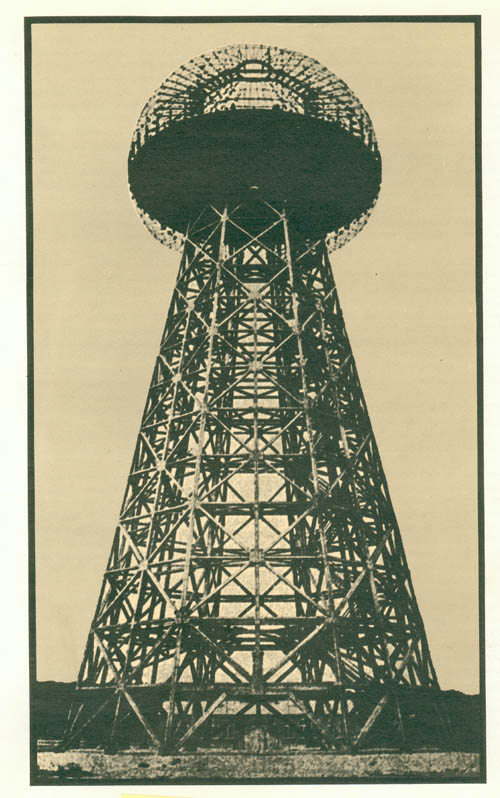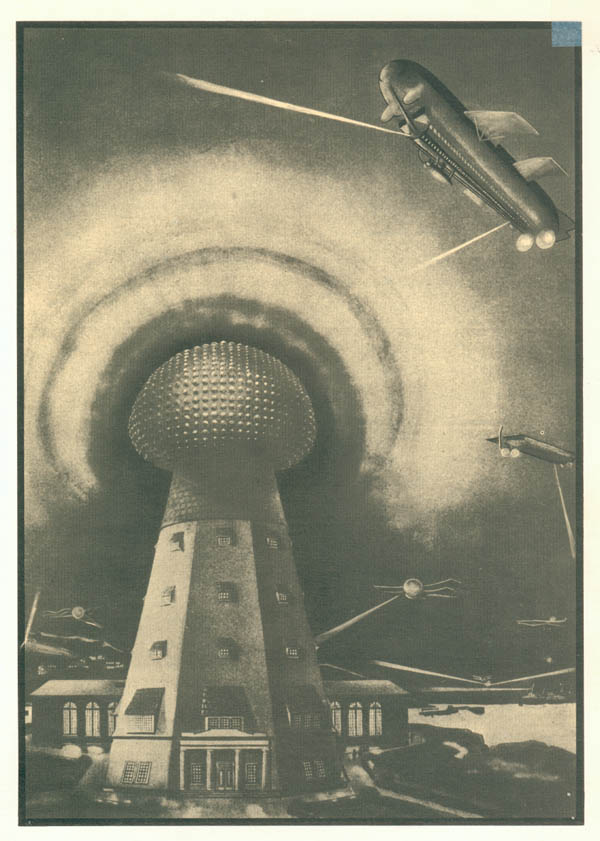Post by TheOverSeer on Aug 23, 2024 11:17:50 GMT

Tesla entered the twentieth century in triumph, at the peak of his career. And from that summit he wanted to realize the greatest of all his inventions—the Wardenclyffe Tower, the centre of a futuristic global telecommunication system. His grand idea was finally given the green light in 1901, but in less than a year the project went sideways and Tesla would eventually be ruined scientifically and economically by the venture. What happened in that year?
The brilliant inventions of Nikola Tesla (July 10, 1856 – January 7, 1943) had launched alternating current technology, making it possible to illuminate and supply power to large cities, something that would have made him a millionaire, if not for his generosity (or naivety, for he had renounced most of the royalties agreed upon by the use of his patents.) Even so, he had the privilege and the means to be able to investigate what he wanted, and he did so during the 1890s, culminating in his fascinating achievements at his experimental station at high altitude in Colorado Springs (in the American Far West).

Tesla entered the twentieth century in triumph, at the peak of his career. And from that summit he wanted to realize the greatest of all his inventions—the Wardenclyffe Tower, the centre of a futuristic global telecommunication system. His grand idea was finally given the green light in 1901, but in less than a year the project went sideways and Tesla would eventually be ruined scientifically and economically by the venture. What happened in that year?
The brilliant inventions of Nikola Tesla (July 10, 1856 – January 7, 1943) had launched alternating current technology, making it possible to illuminate and supply power to large cities, something that would have made him a millionaire, if not for his generosity (or naivety, for he had renounced most of the royalties agreed upon by the use of his patents.) Even so, he had the privilege and the means to be able to investigate what he wanted, and he did so during the 1890s, culminating in his fascinating achievements at his experimental station at high altitude in Colorado Springs (in the American Far West).
Illustration of Tesla’s system of wireless transmission of power to aircraft. Credit: Frank Paul
From there Tesla returned to New York determined to realize his dream—to create a wireless telecommunications system with totally new technology. During the year 1900, the elegant and lanky Serb (standing 1.88 metres tall and weighing just 64 kg) sought financing by wining and dining potential investors at select Manhattan venues: the luxurious Waldorf-Astoria hotel (where he then lived), The Players Club, and the famous restaurant Delmonico’s. In this way he seduced the financier J.P. Morgan, who in March 1901 decided to invest $150,000 (equivalent to more than $4 million today) in the construction of the Wardenclyffe Tower.
Morgan was very impressed by the achievements of Guglielmo Marconi, his rival in that technological race, but Tesla succeeded in persuading the tycoon, detailing the ambitious applications of his project: “As soon as completed, it will be possible for a business man in New York to dictate instructions, and have them instantly appear in type at his office in London or elsewhere,” Tesla told him. “He will be able to call up, from his desk, and talk to any telephone subscriber on the globe, without any change whatsoever in the existing equipment,” he added convincingly.
His vision was very clear and foresaw scenes from the information society in which we live today: “An inexpensive instrument, not bigger than a watch, will enable its bearer to hear anywhere, on sea or land, music or song, the speech of a political leader, the address of an eminent man of science, or the sermon of an eloquent clergyman, delivered in some other place, however distant. In the same manner any picture, character, drawing or print can be transferred from one to another place. Millions of such instruments can be operated from but one plant of this kind.”

With Morgan’s investment, Tesla immediately set to work. He bought a 200-acre lot on one end of Long Island (New York), commissioned the large generators and electrical transformers needed from the Westinghouse Electric Company and hired a prestigious architect, Stanford White, who was enthusiastic about the project. Together, Tesla and White designed a 187-feet high wooden tower, with a hemispherical metal dome 68 feet in diameter; next to this a main building, in a style inspired by the Italian Renaissance, would house the research laboratories and the other facilities of the telecommunications station.
Everything was ready for the construction of the Wardenclyffe Tower to begin in August 1901, but by then Tesla’s plans had already radically changed. His rival Marconi was ahead of him and had already managed to transmit radio signals between France and England, much further than Tesla and many physicists thought was possible. In June 1901, Marconi gave some details of his radiotelegraphy system in an article published in the magazine Electrical Review, and in his description detailed the use of “Tesla coils” connected to ground. This led him to think that Marconi was copying his idea: Tesla pretended using a so-called “terrestrial resonance” and a new class of stationary waves to transmit telegraphic messages—instead of the radio waves that Marconi used, of whose existence Tesla was sceptical despite being theoretically and experimentally proven.
This is how Nikola Tesla was reassured of his own theory that was never scientifically demonstrated. In 1899, during his experiments in Colorado Springs, he managed to wirelessly light some bulbs outside the laboratory where he had powered up a huge “Tesla coil.” He believed that he had achieved the terrestrial resonance he sought, which he thought would work at any distance. That seemed enough to prove his ideas, and Marconi’s article of June 1901 prompted him to continue on that path. A month later, he proposed to J.P. Morgan a much more ambitious plan to gain the upper hand over Marconi—not only would he send messages in Morse code across the Atlantic, but he would also transmit electricity long distance and without cables.
To achieve this, he felt that would need a tower almost double the height (300 feet) and, of course, much more money. Morgan refused to increase the investment and Tesla had to start the construction of the Wardenclyffe Tower in September 1901, staying true to the original plan. Two months later, December the 7th, the project received another blow—Marconi had managed to transmit the letter “S” in Morse code across the ocean, from England to Newfoundland (Canada). In that era of financial uncertainty, investors preferred to bet on the Marconi system, which, having been less ambitious, had achieved historic success.
Tesla did not give up. He finished the Wardenclyffe Tower in 1902 and carried out experiments there until 1905, without managing to launch his beloved telecommunications station, the first of a great worldwide network. That year his alternating current patents expired, and this was the remaining source of funding. Tesla made a second mortgage of Wardenclyffe—the first had been to cover his debts at the Waldorf-Astoria Hotel, which reached $20,000 ($478,000 in today’s money)—but he still had to abandon the project, which the press was beginning to label a “hoax”.
After years of neglect and deterioration, Tesla lost ownership in 1915 as he was unable to afford the mortgages. The Wardenclyffe Tower was demolished in 1917 and the main building ended up being a factory of photographic material, until AGFA closed it in 1992. In 2013, a successful campaign was launched by the creator of the web comic The Oatmeal to repurchase the property and to construct on the site the Tesla Science Museum, in honour of a great inventor who, after the failure of Wardenclyffe, never made any of his revolutionary ideas come true again.

